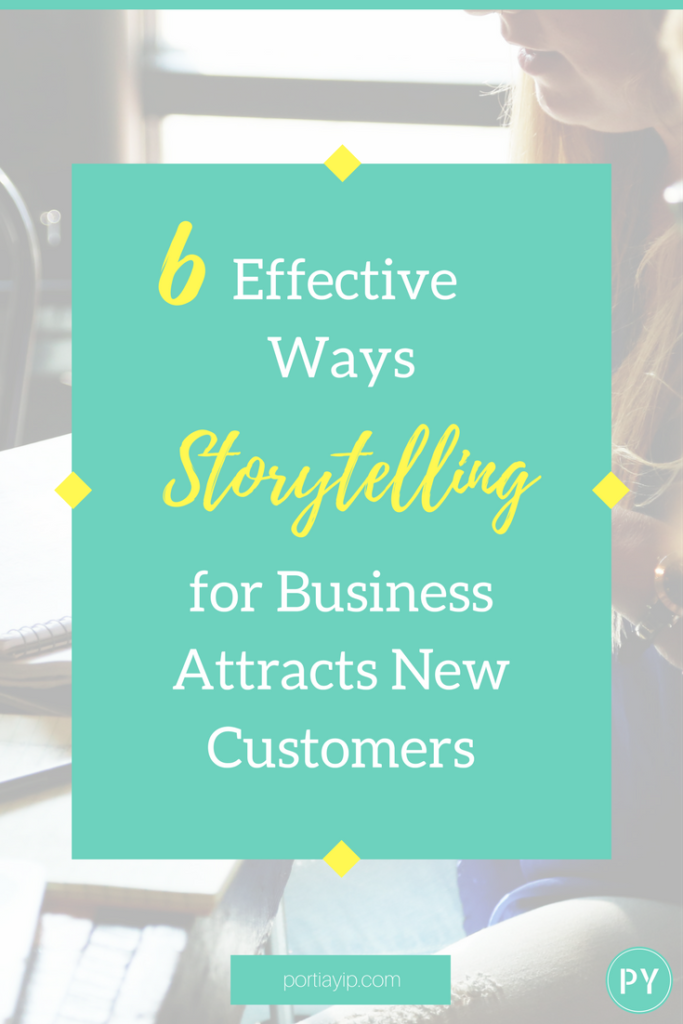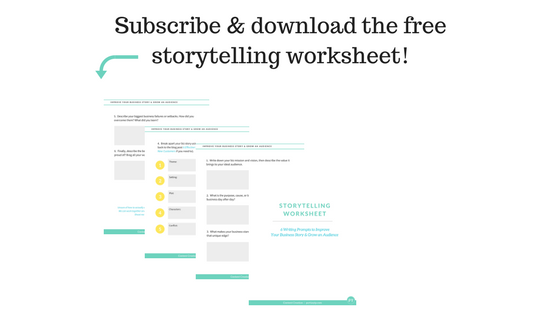
6 Effective Ways Storytelling for Business Attracts New Customers
Storytelling has always existed.
From prehistoric cave paintings, to oral legends or folklore, we’ve been sharing stories for thousands of years. Think about it for a moment. We don’t go a day without stories.
If you read or watch the news, you’re consuming a story. Or say you’re catching up with a friend over coffee about what you’ve been up to—you’re telling a story. So if stories are following us around all the time, they must be pretty special hey?
The fact is, stories sell. They always will.
It’s funny because there’s nothing new about storytelling for business. The real difference between what makes a great story from a mediocre one, is how it’s told.
When it comes to growing your target market or customer base, storytelling is your most valuable tool. But stories exist more to simply inform. You have to craft your story in a way that goes beyond the facts and numbers.
Jennifer Aaker, a marketing professor at Stanford’s Graduate School of Business (and author of The Dragon Fly Effect: Quick, Effective), says our brains are wired to remember stories better than data, facts, or figures.
“Research shows that our brains are not hard-wired to understand logic or retain facts for very long. Our brains are wired to understand and retain stories,” she says. “Everyone needs a signature story. The most powerful signature stories are those that take the audience where you want them to go.”
A powerful story inspires, motivates, and compels people to share it with others. Exactly what you what your clients or customers to do right?
- Inspire them so they believe in your cause and what your awesome biz has to offer.
- Motivate them so they make a purchase and convert into a long term customer.
- Compel them to tell all their family and friends about your biz.
No matter what your niche is, storytelling for business is so important to reach and attract your ideal clientele.
The problem though is that storytelling is yet another buzzword rolling off the tongues of thought leaders and digital marketers.
We’re preaching how stories must be a part of every marketing or advertising strategy, but the challenge is helping business owners or entrepreneurs tell their story. Not the story of the similar company across the street.
Want to improve your business story but not sure where to start? Well, no need to worry because here are six ways storytelling for business can help you attract new customers:
1. The five elements of a story
In traditional literature or fiction, every story has five key elements: character, setting, plot, conflict, and theme. The same elements apply when telling your biz story, but let’s modify them a bit.
First off, be crystal clear on your story’s theme.
What is your biz really all about? Why does it exist? Why should people care? Dig deep and answer this from the heart.
Next, you want to set the scene for your ideal audience by giving them a little context. Vital context. Set aside some time and brainstorm what details of your biz you think your audience will enjoy learning about.
If you want some prompts to help you flesh out your new and improved biz story, download this free worksheet.
Once you’ve got your context down, next comes the plot from a business perspective (the juicy parts of your biz story that will captivate your customers).
Leave them wanting more, make your story enticing. Think back to before you started your biz. Are there any interesting tidbits that would intrigue your customers?
Don’t forget to include the characters in your business.
People want to know the face and person behind a business, because people buy from other people.
Don’t be afraid to open up, be you, and share your personality, snippets of your day-to-day life, etc. If you have a business with a few employees, make sure you get their bios up on your website—and integrate your team into your biz story.
People want to know the face and person behind a business, because people buy from other people. Share on X
Moving on to conflict.
I know you might feel hesitant to share your challenges or struggles, but think of it as a motivating story that creates an emotional connection with your audience.
This ultimately builds trust and credibility because when you’re transparent and vulnerable, people will recognize it, appreciate the honesty, and feel a connection because you’re showing empathy.
We all have flaws and everyone makes mistakes, but most of us overcome these hurdles and become stronger. People resonate more with these types of stories because our faults are what make us human and relatable.
2. Think about your audience first
Your first instinct might be to share what you feel are your biggest life accomplishments. But stop for a second and really consider your audience.
Do they really need to know that you graduated at the top of your class with a PhD in philosophy? Even if it’s something you’re super proud of, if it doesn’t relate to your business, your audience probably doesn’t care.
On the other hand, maybe after earning the title of “doctor,” you realized what kind of business you wanted to start—and you did, by jumping head first into it and abandoning your love for Plato or Socrates.
Now that’s way more interesting and something your audience can connect with, right?
3. Spark an emotional connection with your audience
There’s a reason we’re drawn to certain genres of movies. Some of us love the fast-paced action and adventure stories because it’s thrilling and adrenalin-pumping to watch all that shiz get blown up.
Then there are those of us who love a good romantic comedy or tear-jerker because it pulls at our heartstrings, and leaves us emotionally connected to the story and characters.
No matter what kind of movies you like, feeling something makes us more human, more alive—and your target audience should feel something too from your products or services.
Consider what emotion you want your audience to feel and communicate that in your story. Use experiences or examples that illustrate the emotion you want to achieve.

4. Show, don’t tell, by using all five senses
The more senses you use (sight, smell, sound, touch, and taste) to grab your customers’ attention, the more they’ll start paying attention. It also helps you switch up how you’re telling your story, especially when you’re sharing pieces of it everywhere—online and offline.
Visuals are usually the first thing we think of when we’re promoting a product a service, but let’s try to appeal to all the senses.
If you own a physical store space, do you have music playing in the background? If you’re using a local radio station, STOP right now and curate your own playlist. Think about how you want your customers to feel when they walk in. For example, you wouldn’t want to hear 80’s rock in a meditation studio, right?
But if your target market is the trendy and fashionable kind because you own a cool clothing or jewelry boutique, turn on some upbeat tunes (maybe with some Queen Bee because a bit of Beyonce never hurts!)
Whatever product you’re selling, tell your audience what it feels, smells, or tastes like. You could tweet how exciting it smells when you’re in the process of shipping a huge order of leather bags and accessories. Or maybe you have a necklace that looks like candy—what candy would it taste like?
Whatever product you're selling, tell your audience what it feels, smells, or tastes like. Share on XYou don’t have to go crazy or overboard and say how scrumptious that rosemary and mint soy candle smells when you breathe in the non-toxic, herbal scent while cradling the delicate mason jar in your hands—but I know you get the picture!
5. Begin your story where the action happens
Your customers and clients don’t need to know every fact, figure, or detail of your business in chronological order. Give your audience the best parts of your story, which means starting the story with something exciting, in the middle of the action.
Our attention spans are as short as ever these days, so make the most of it by sharing the interesting bits.
As an example, do your clients really need to see a shot of your large chai latte everyday? Probably not. But would they like to know that you had your best month ever financially and you’re celebrating by treating yourself to that chai latte? The latter sounds way better in my opinion.
6. Tell your audience what matters most
At the end of the day, your audience matters the most. There’s no story if you don’t have an audience. So remember, write your story knowing that it’s your audience you want to reach and please.
There has to be something in it for them—your audience.
Whether it’s a feeling, something that brings them joy, or a cause they want to believe in. Visualize your ideal customer or client and get really detailed. How old are they? What are their interests, likes and dislikes? Their personality.
Then tell them a story that matters the most. Woe them with your story, inspire them, and soon they’ll easily be flocking to your biz doorstep.




Thank you for such a great post. The insight was invaluable and very easy to follow.
Thanks so much for the kind words Sherri! Really appreciate it and glad you found the post helpful